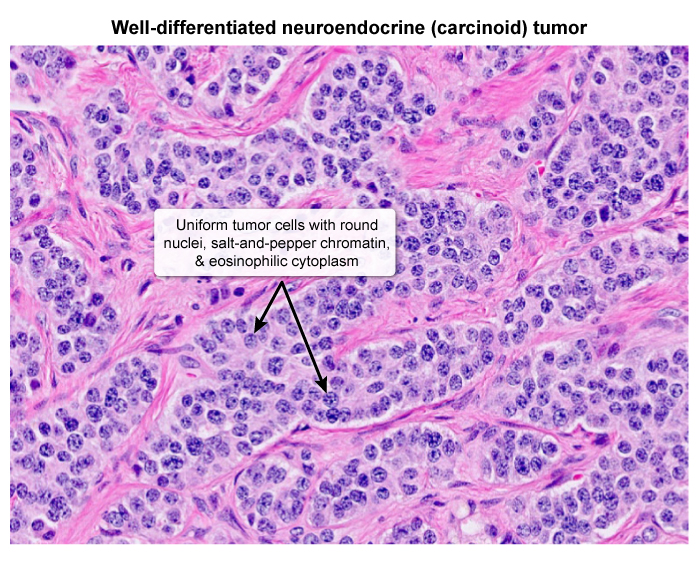Carcinoid Syndrome And Well-Differentiated Neuroendocrine Tumors
Article Sections
Introduction
Neuroendocrine tumors (NETs) primarily originate from the gastrointestinal tract or lungs. Historically, NETs were referred to as "carcinoid tumors" when found outside the pancreas, whereas pancreatic NETs were described as "islet cell tumors." However, the term "well-differentiated NETs" (WDNETs) is now preferred over "carcinoid tumors." This article focuses on WDNETs and the associated carcinoid syndrome. Pancreatic NETs (eg, insulinoma, gastrinoma, glucagonoma, VIPoma), although histologically similar, are clinically distinct and are discussed in a separate article.
Tumor pathophysiology and classification
WDNETs are rare, slow-growing tumors that arise from enterochromaffin cells in the gastrointestinal tract or lungs. Although most are asymptomatic, some can produce bioactive substances, most notably serotonin, which plays a crucial role in carcinoid syndrome. In carcinoid syndrome, excess serotonin production is attributable to abnormal tryptophan metabolism. In normal cells, only about 1% of tryptophan is converted to serotonin (
Continue Learning with UWorld
Get the full Carcinoid Syndrome And Well-Differentiated Neuroendocrine Tumors article plus rich visuals, real-world cases, and in-depth insights from medical experts, all available through the UWorld Medical Library.
Figures

Images
